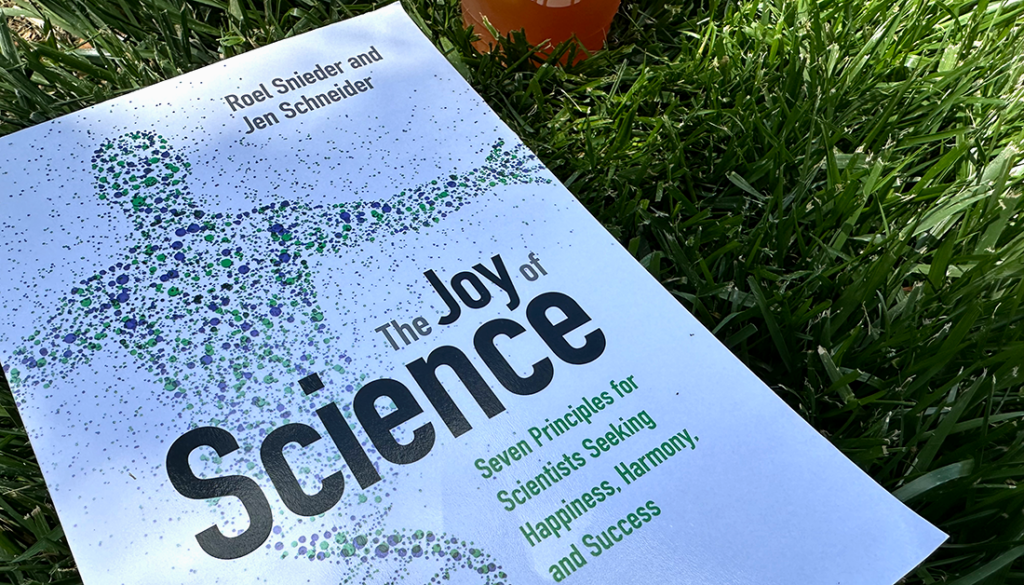Rekindling the Fire: A Review of The Joy of Science

For most of us, science begins with a rush of “Wow! This is super cool!” But the emotional fire can subside after years of hard work. Negativity in popular culture can make us forget the depths of our why. To rekindle our passion to see the universe’s beauty, physicist Roel Snieder and policy expert Jen Scheider remind us of the human heart of science and lay out a spiritual center to our enterprise.
By highlighting our personal role in discovery, they provide a template for scientists seeking to both live a fulfilling life and do first-rate science. This template offers seven principles that can enrich our lives under the hypothesis that happy people produce better work. These principles are harmony, courage, vision, curiosity, listening, compassion, and integrity.
Each chapter doesn’t merely provide a “rah rah” pick-me-up; it cites the literature and analyzes the subject in a manner appropriate for scientists. The authors study scientists’ spirits, how each of us feel as we work, and present these feelings as noble expressions of human spirit. Playful, hand-drawn illustrations excite the imagination as the authors practice what they preach – and bring readers along for the ride. Sections also provide practical exercises for readers to integrate these abstract concepts into their day-to-day lives.
One of my takeaways: Modern conversation often puts spirituality and science at odds with each other. Religions, the traditional home of spirituality, sometimes tread on science’s turf, and scientists sometimes fear the untested authority of religion. In my own life, I’ve found that science and religion have a lot to learn from each other, and both can benefit from more listening, a core principle in this book. This text does not address religion directly, but the authors do describe what human spirituality in scientific endeavors looks like from two scientists’ perspectives. They speak of science not as a chore to complete nor as a grade to earn but as a “love” to explore. In academe, it’s easy to neglect such intrinsic emotional engagement with our work.
By giving us examples of how personal attitudes interact with scientific endeavors, the authors explain these seven principles’ impact in concrete terms. For instance, they help us relate our science to our students and even our children. They also extrapolate what inner courage resembles in a scientific career. Elsewhere, they dwell on staving off a sense of professional loneliness and having compassion for students who can also be lonely in their work. To them, finding joy in your work translates into bringing joy to the rest of the world through your work.
Snieder and Scheider contend that honing personal qualities can reduce the chore of getting work done while encouraging us to skip to work each day. As with most things, increased happiness requires attentive effort but is ultimately realizable. Paying attention to our innate human spirituality can bring personal meaning to ourselves and help us convey nature’s wonder better to others. This book shows us how. It reminds us that life’s beauty isn’t found just in exotic natural oases; with the right attitudes, it’s found at our lab benches as we investigate, in our scientific journals as we read, and on our fingertips as we type.
The Joy of Science: Seven Principles for Scientists Seeking Happiness, Harmony, and Success, by Roel Snieder and Jen Schneider.
ADDITIONAL RESOURCES
Why I Love Mondays
Awesome Things About Life in Research
Why and How to Plan a Creative Retreat
Creator: Scott J. Pearson






7 Comments